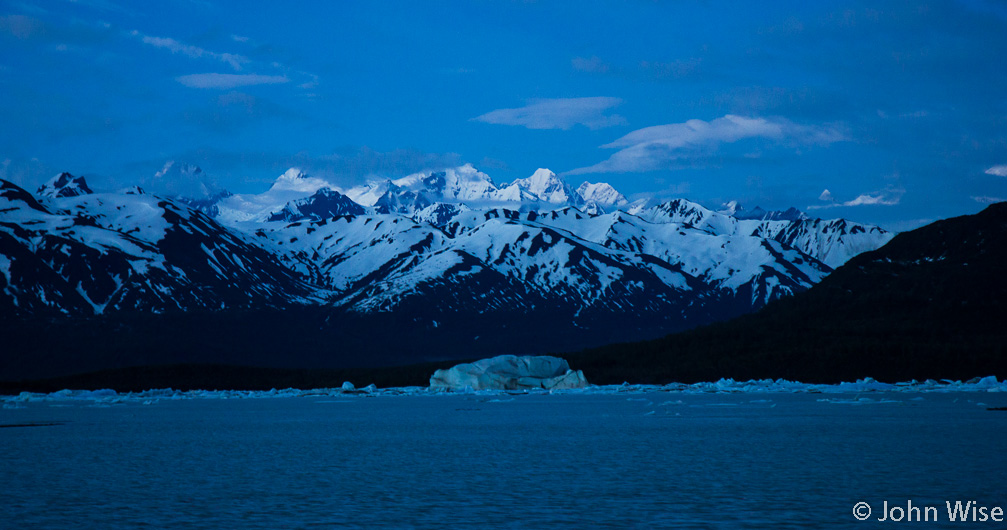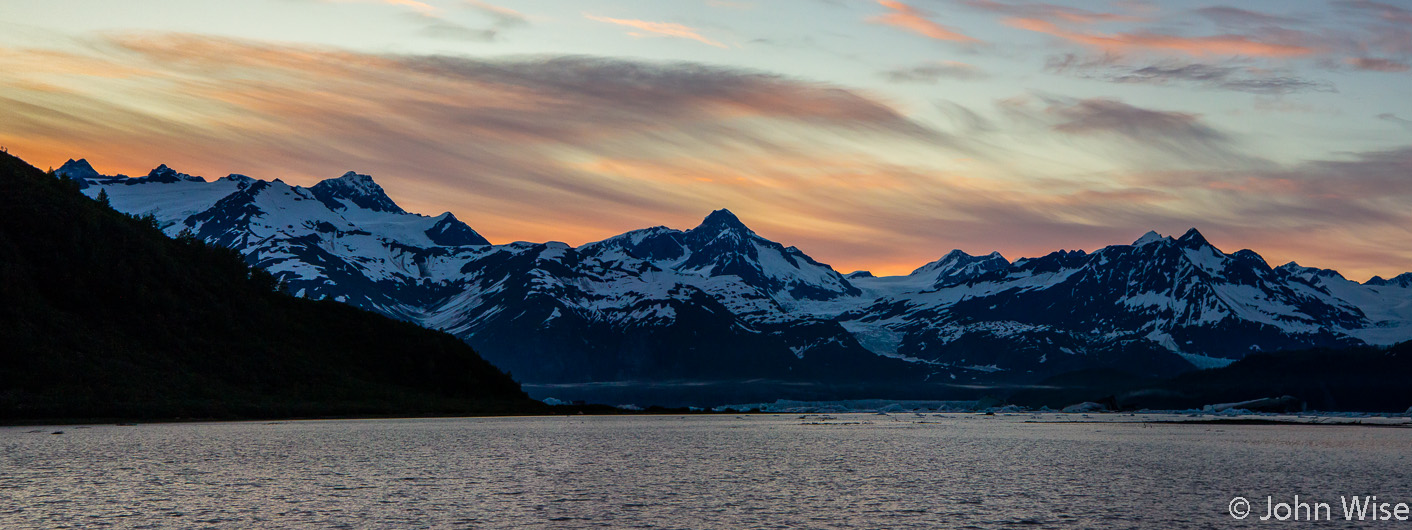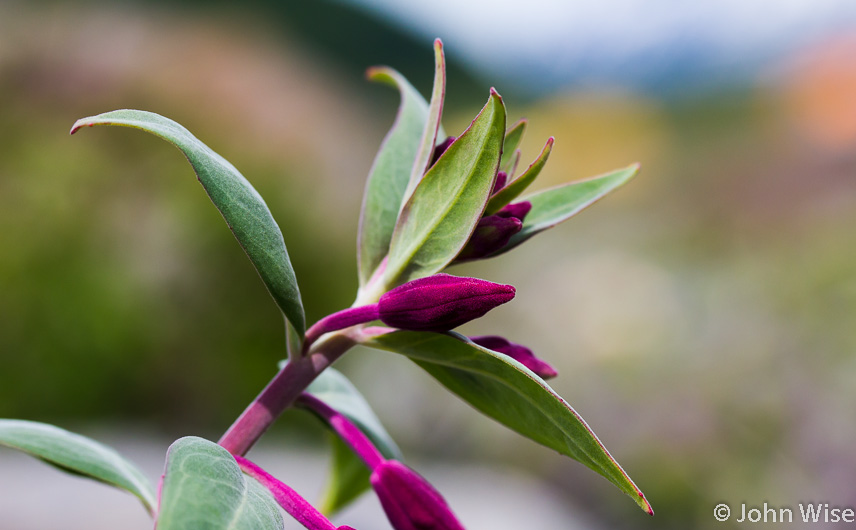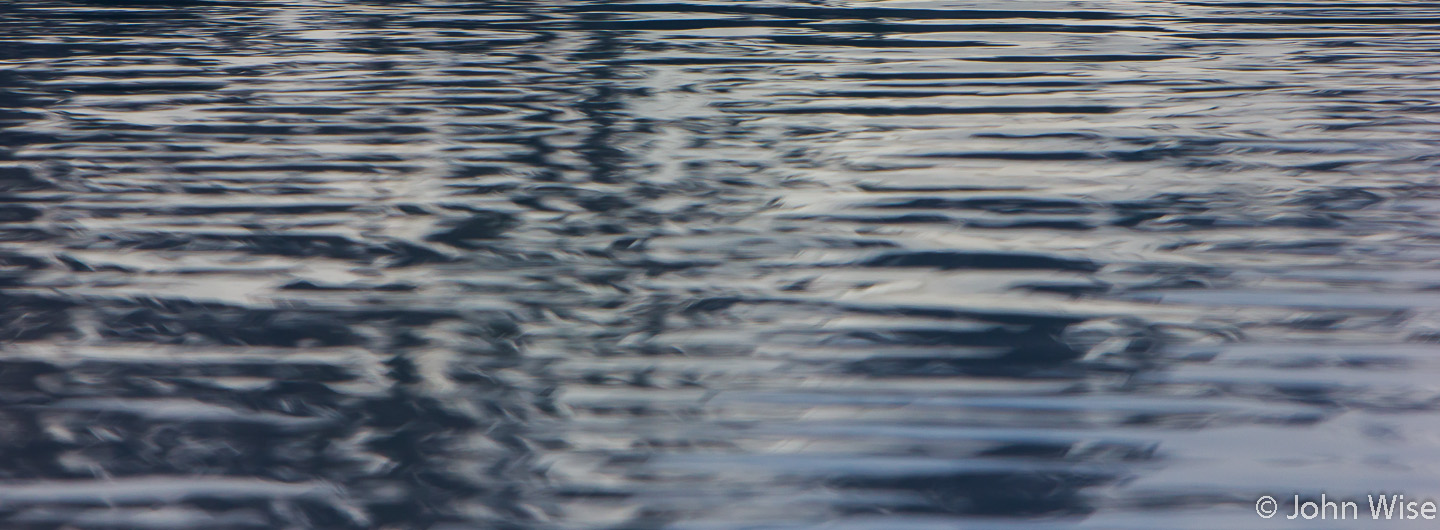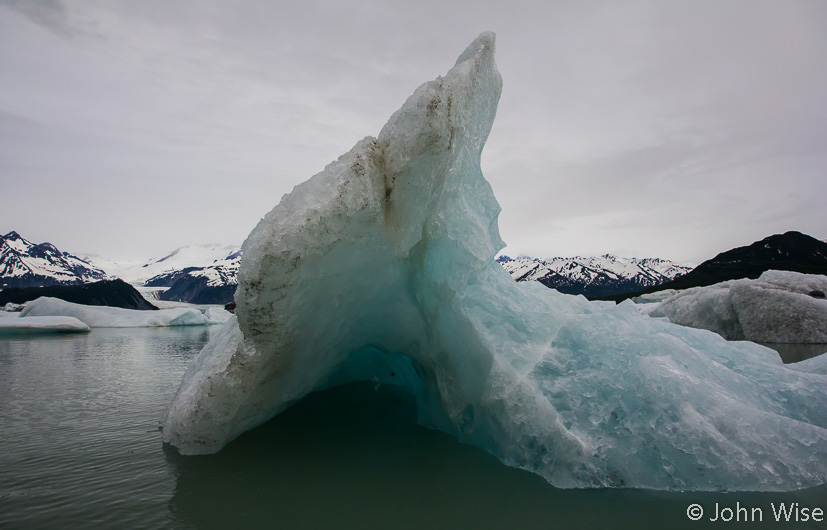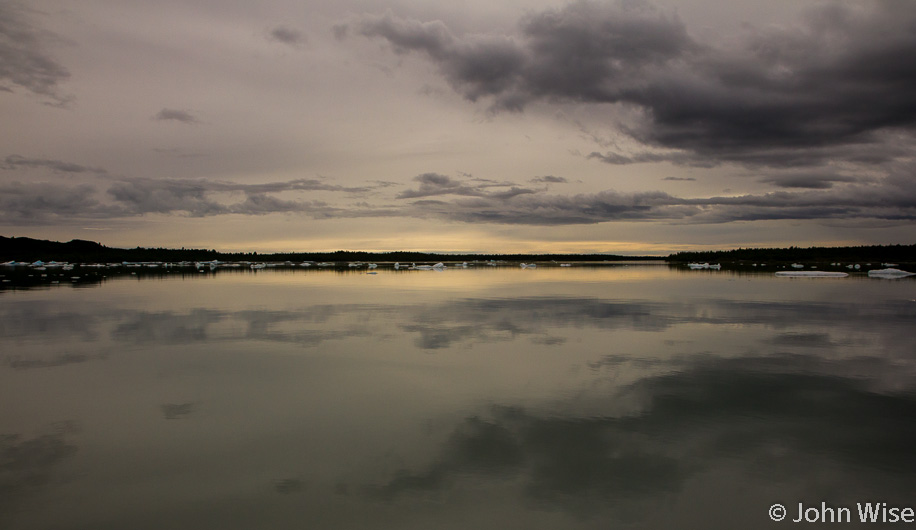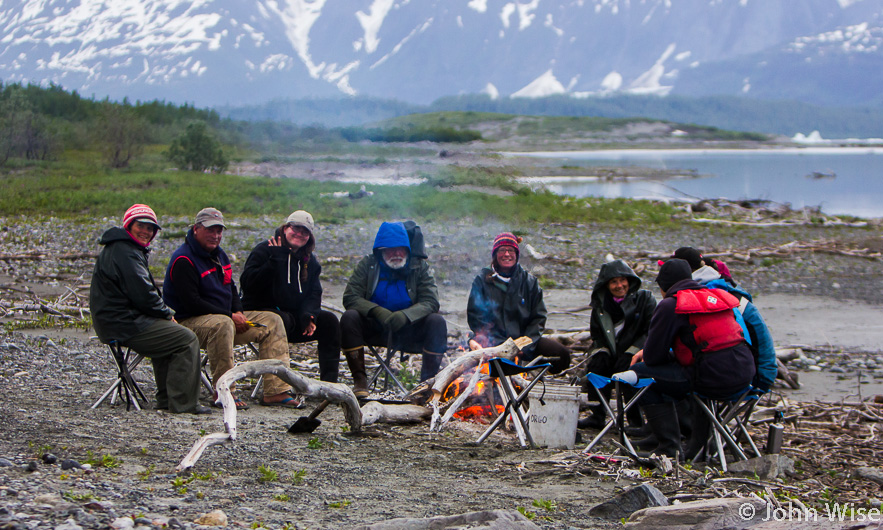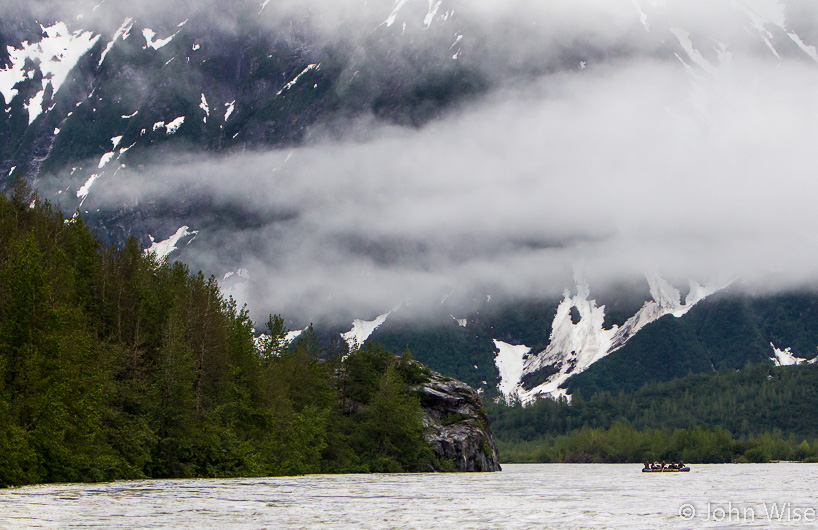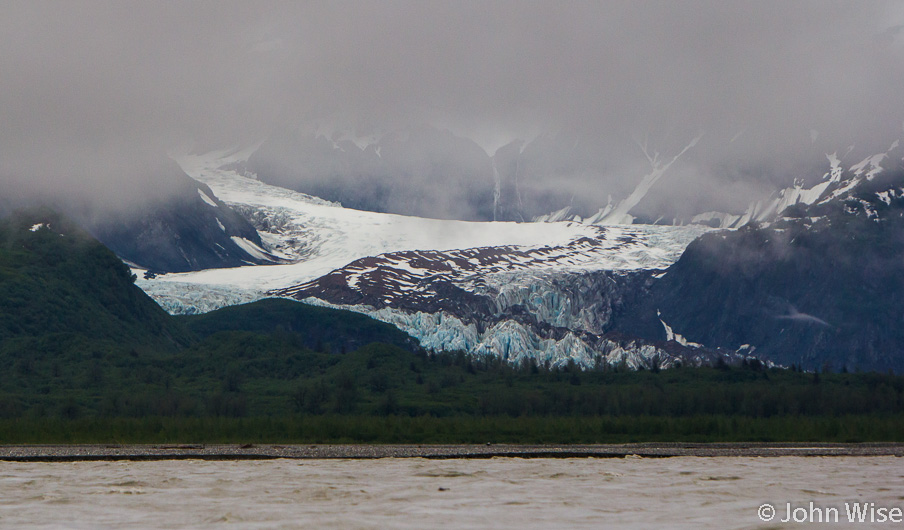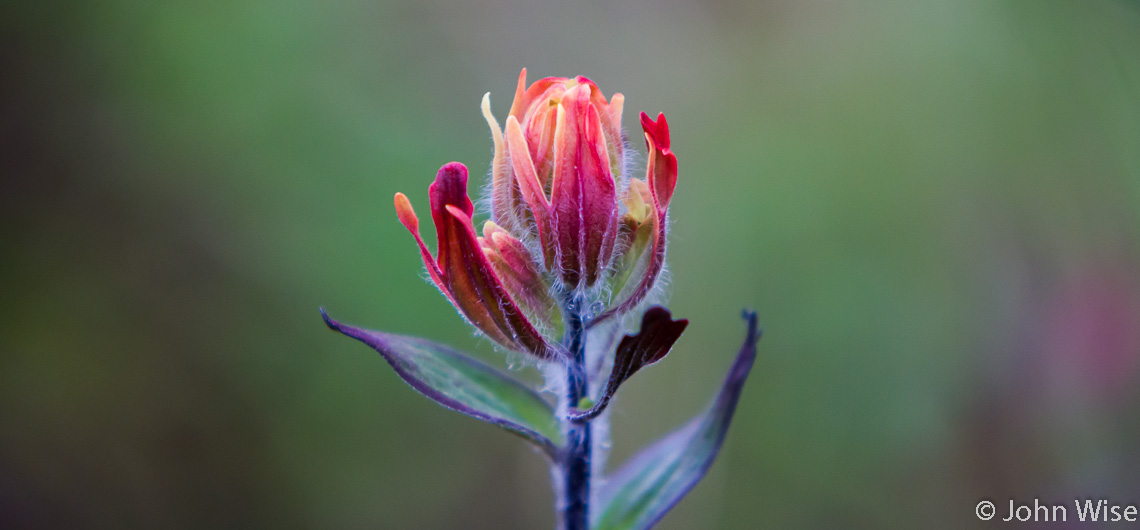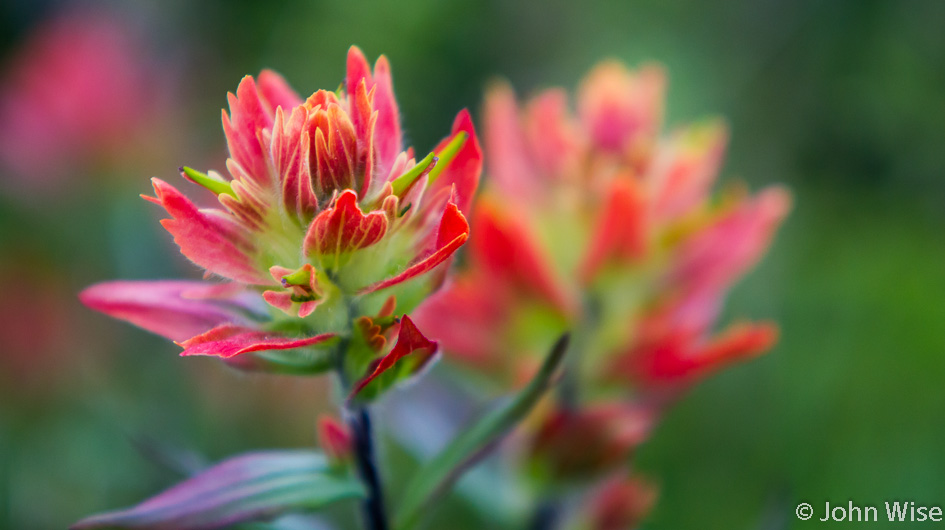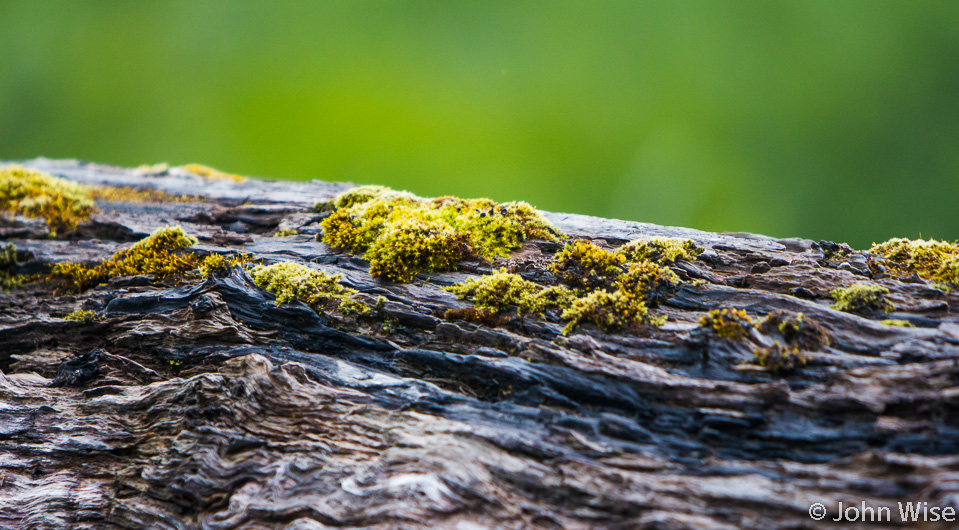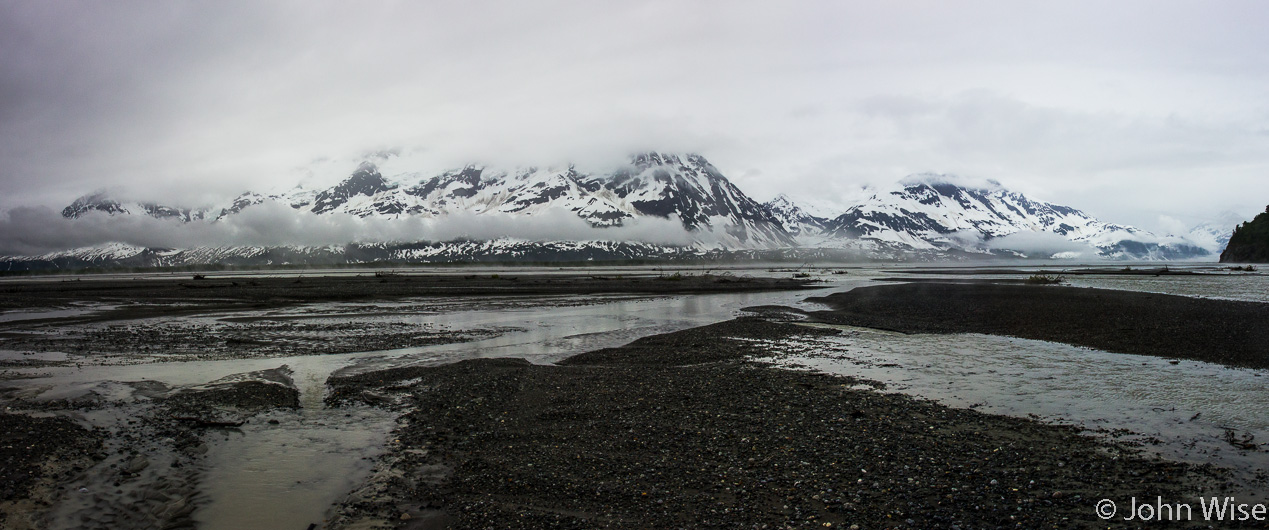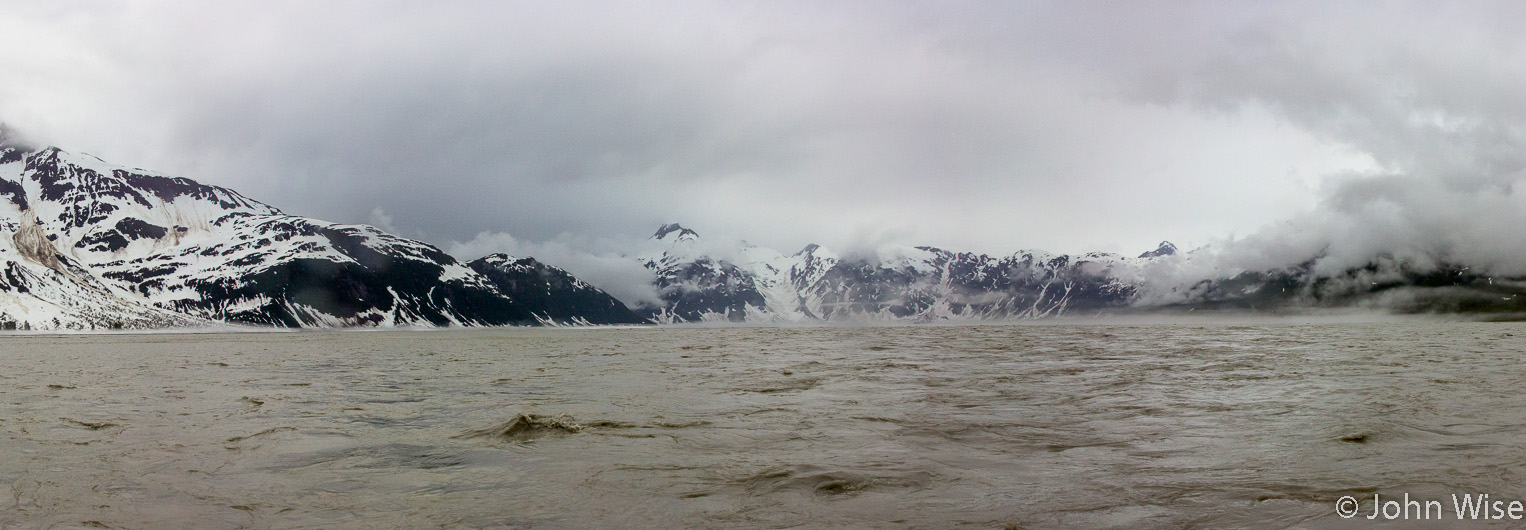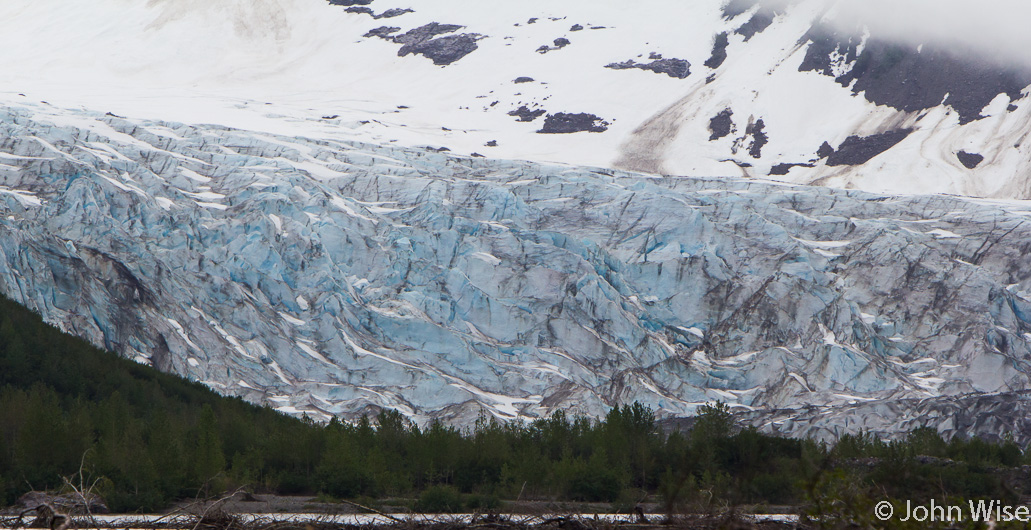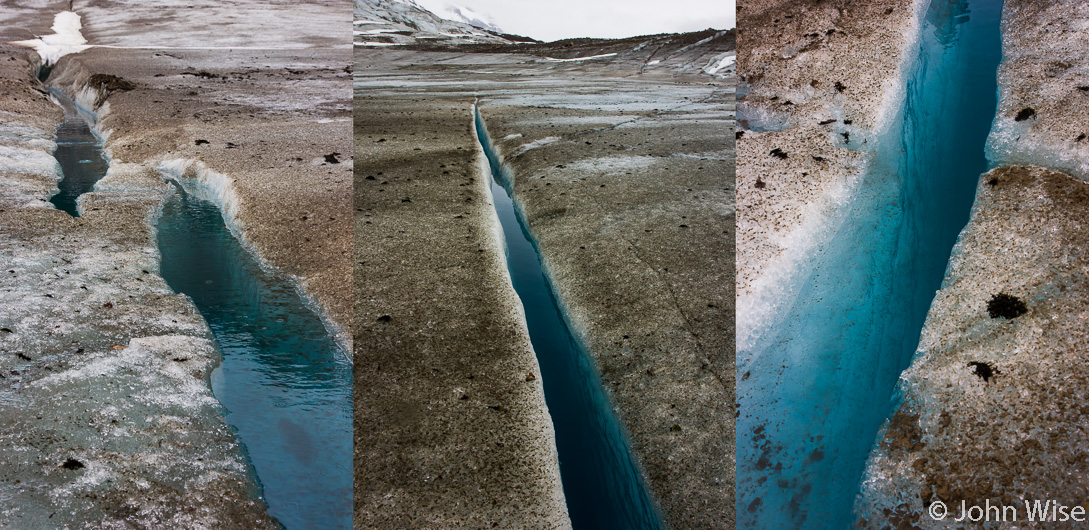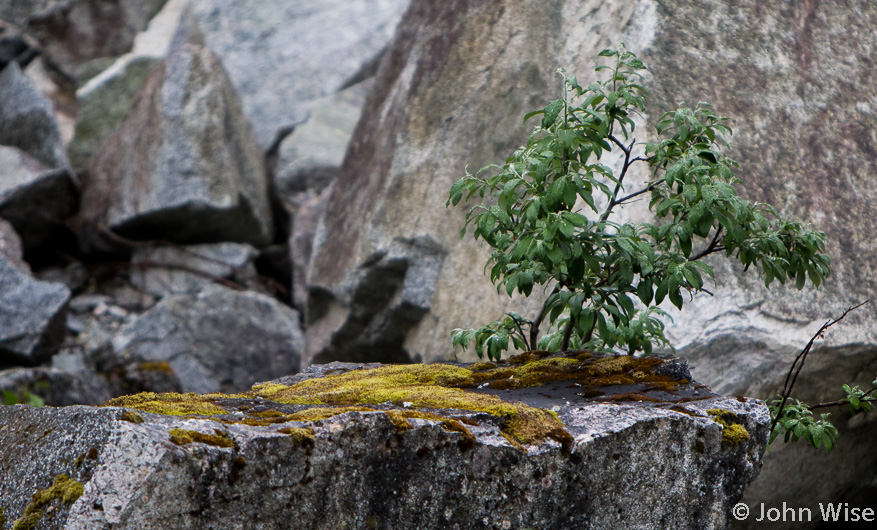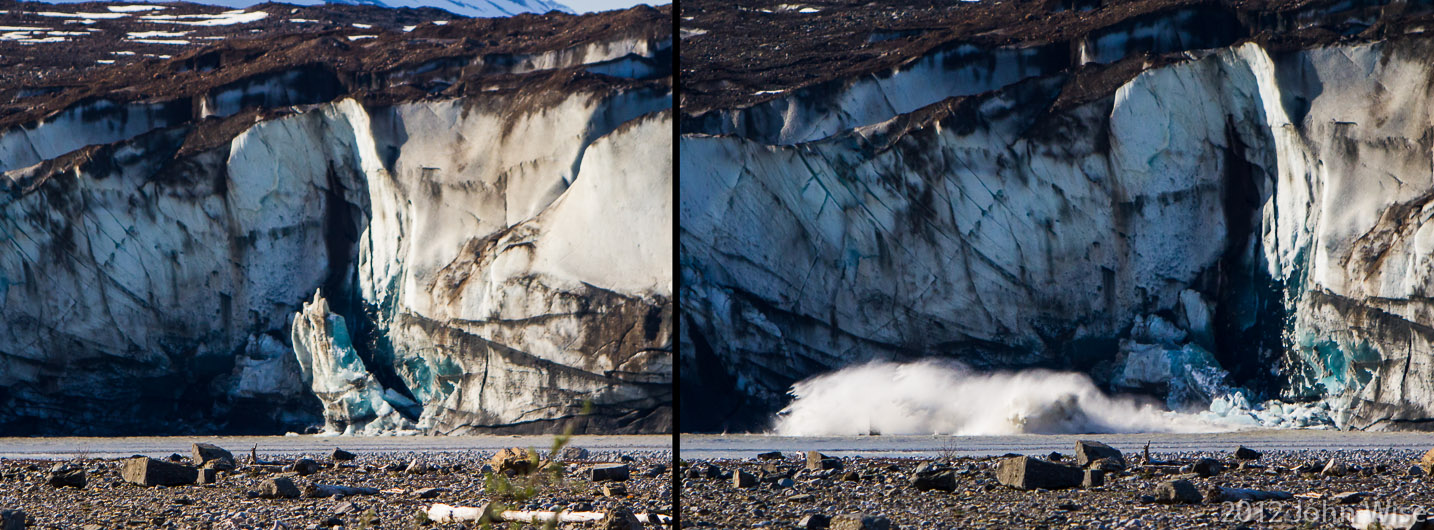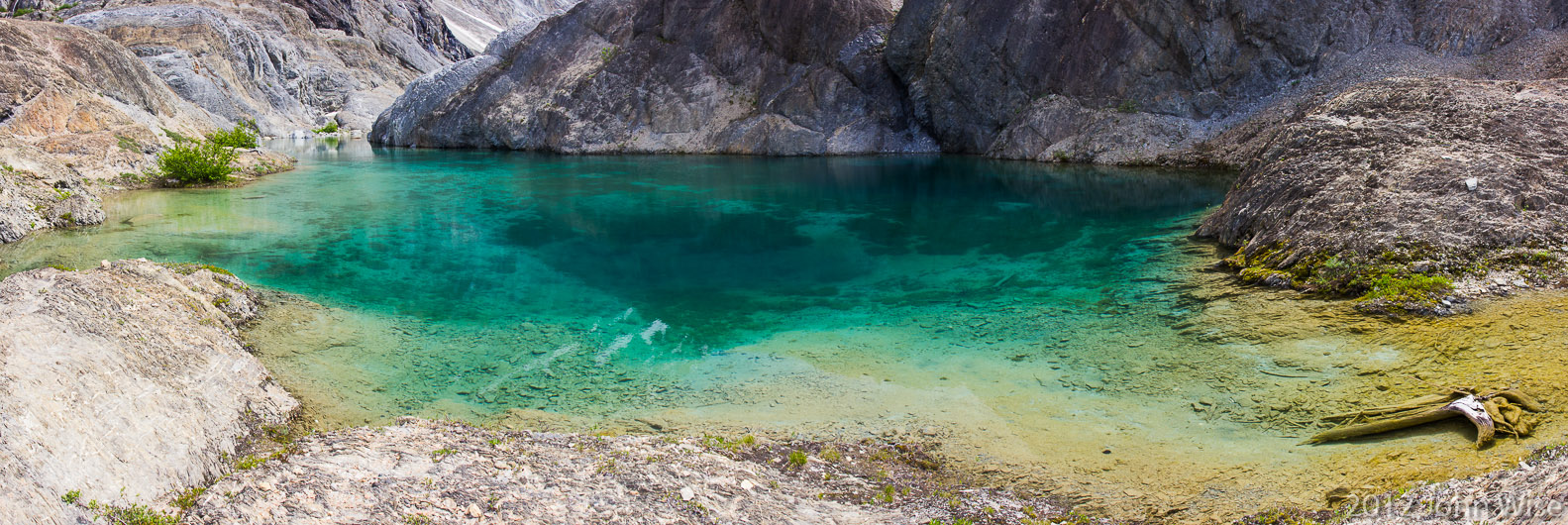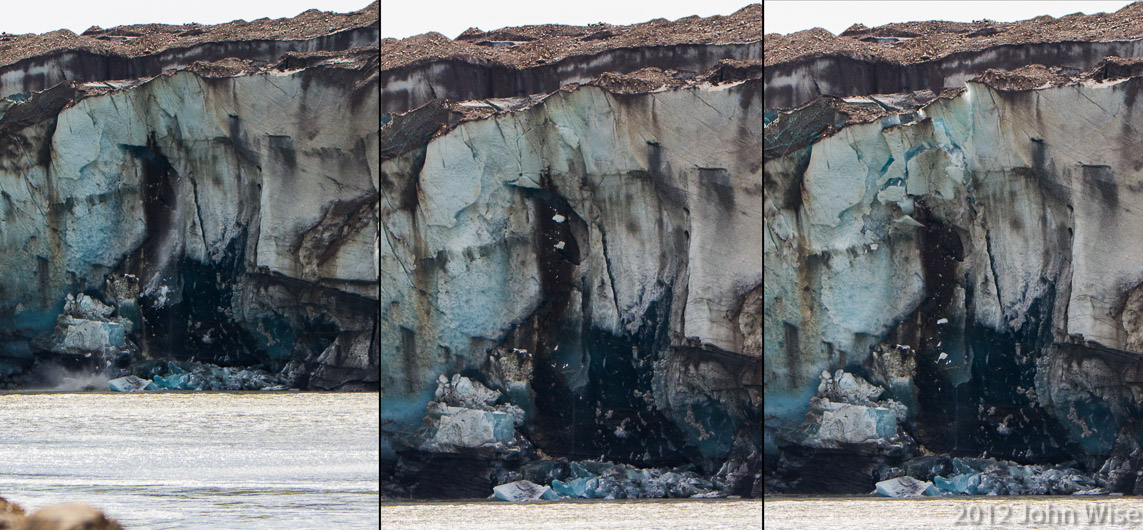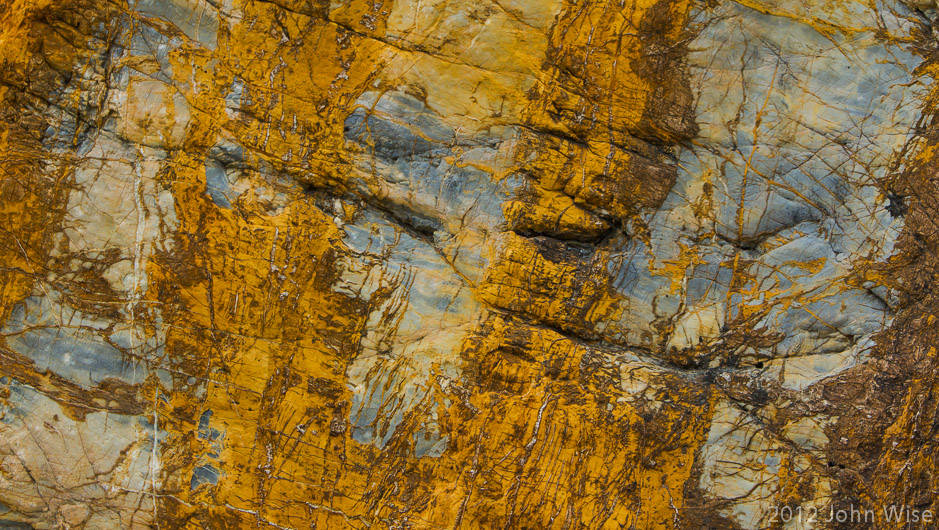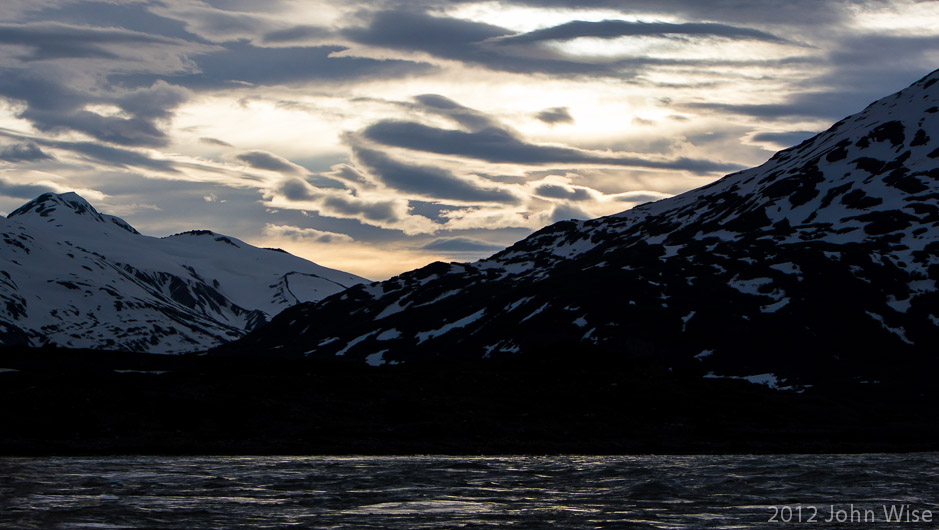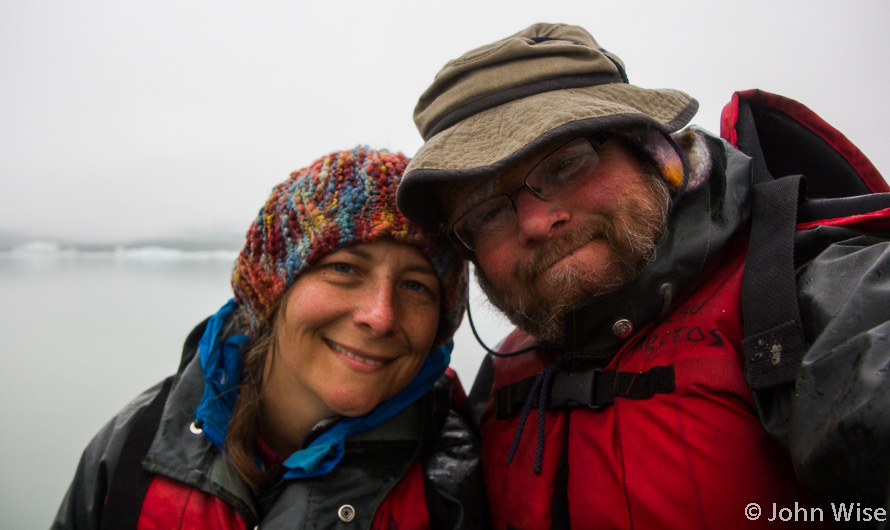
If you would like to read this story sequentially, starting with Day 1 – Click Here!
Chapped, worn, dirty, bitten, and on more than one occasion wet, cold, nervous, excited, and astonished. This is it, the last day on the Alsek River, a bittersweet moment. There’s an awkwardness to finding the vibe on a river trip, as there are new routines, new people, and an environment that stands large and new right before all of your senses. By the time this last day comes along, we have found our stride and are certainly not ready to leave. But we are near the end of the river, to go further would mean venturing into the Pacific Ocean, next stop, Russia, maybe China!

Before we leave the river, we have one more set of rapids and a few miles to run; we savor every moment. Shortly before reaching our takeout, we pass these cut banks where the river, over time has encroached on the forest and has removed the supporting soil. Interestingly, though, we have an incredible opportunity to see just how plants are able to weave together the soil to create the glue that binds the forest floor into a cohesive unit. This is why there is so much risk of flooding and mudslides following a severe fire, especially on mountainsides. In some areas on the cut bank, trees continue to grow at odd angles, appearing as though they could fall into the river at any time, and yet the carpet of plants holds firm, and the trees live on.

The flat gravel bank looms large as it becomes apparent that it would be where we are going to make our exit. The emotions of the moment rage but have to be contained as we have lots to do. We immediately start emptying the rafts of everything before we open the valves and start to deflate them. A local family arrives with trailers being pulled behind their all-terrain vehicles – known as quads. They help us load up our personal gear, and within an hour of landing, we are following a primitive trail through the woods to a landing strip. We don’t have to wait long before our bush pilot arrives in his small plane. Joining us on our flight out of Dry Bay, Alaska, today are a couple of guys whose original plans had been to backpack the Alsek but were foiled by the immensity of the Tweedsmuir glacier. Lucky for them, a passing helicopter took pity on their portage attempt and hauled them out. Security out here doesn’t seem to be much of an issue; there were no full-body scanners or even X-rays. In quick time, we were rumbling down the gravel runway and peeling away from the trees.
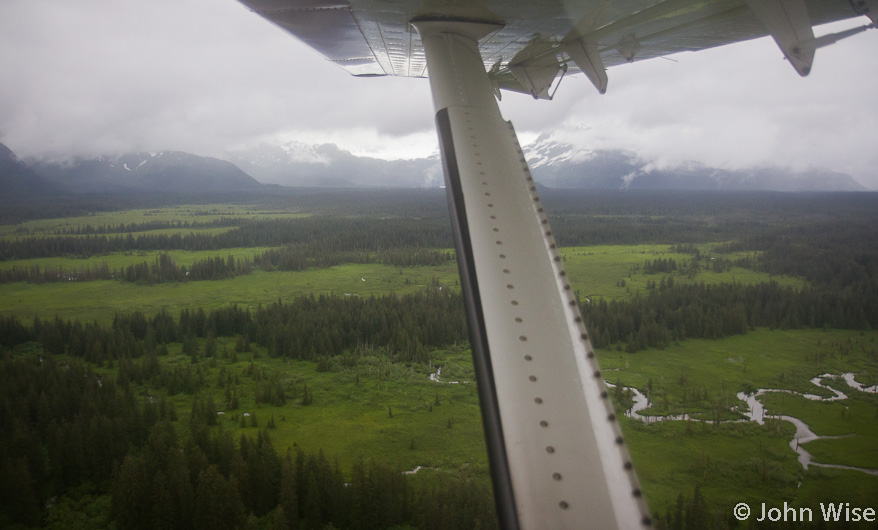
We are flying parallel to the coast, heading north to Yakutat. In the distance, we can just make out the Brabazon Range. It is a solemn moment up here in the sky, watching the world we have known for the previous two weeks disappear. Lucky Shaun, though, has stayed back at Dry Bay; he will accompany the rafts on a different flight back to Haines Junction, where he will turn around and do this all over again with a different group. I dream of being a boatman in another life.

In a few minutes, we’ll land in Yakutat. I have no interest in being in “Yak,” but it is where we must land to catch our next flight. We’ll stay overnight, as my original plans had been filled with the excitement that we would have one more day in the wild to allow us to acclimate to reality before reentering the alternative reality called urban life. Getting a hot shower also seemed like a great idea, but the foreignness of others and the weirdness of being in a hotel were all too overwhelming. Tomorrow morning, we will board a flight to Anchorage, where we’ll have the better part of the day exploring before leaving Alaska at midnight. The memories of where we just were are laden with emotion, life once again has taken a turn and connected me in ways to our Earth I never could have imagined prior to embarking on such an amazing journey.
